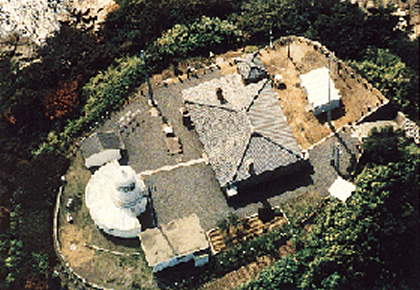The stone material for the light tower is granite and the designer was R.H. Brunton. This is one of the lighthouses installed based on Brunton’s following opinions.
Since the Seto Inland Sea is 250 miles long and 50 miles wide with several thousand islands, ships will navigate fixed channels. It was judged that installation of lighthouses in various places to facilitate navigation during dark nights would be a major project, and their effectiveness was also questionable. It was therefore decided that, if the ships navigated during the night to an anchorage with the lighthouse as the target, and navigated the difficult places the next day, it would be possible even with a few lighthouses. The lighthouses I have proposed are based on the following views.
1. A lighthouse should not be installed on capes where the shape is not complex and, moreover, where there is no danger of ships going aground.
2. In straits that are difficult or dangerous to navigate at night, it is necessary to provide a lighthouse for safe navigation to a berthing area at break of day.
3. If a lighthouse is to be installed, install it in a strait or in the middle of a number islands where confirmation of ship position is difficult.
Based on the foregoing, I have planned construction sites for lighthouses near Kobe and Osaka, and also on the Inland Sea, and have received overwhelming support from the marine authorities on other matters.
Remains of an early Meiji period lighthouse duty diary indicate that, although lighthouses were constructed for guiding vessels safely at night, the Nabe Shima and Tsuru Shima lighthouses alone were initially used as ship berthing signals.





